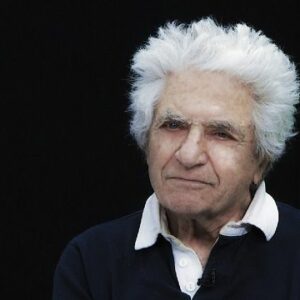Jack Steinberger is a physicist who, along with Leon Lederman and Melvin Schwartz, co-discovered the muon neutrino, which earned them the Nobel Prize in Physics in 1988. He was born as a Jew in Germany, where he had a very humble life due to the country’s post-war slump. When the Nazi party came to power, things took a turn for the worst, and systematic persecution of Jews began. His parents arranged for him to be transported to the United States when he was 13 years old, fearing for his life. He struggled to make a living in a foreign place and was helped by Jewish organizations in the United States. Despite the difficulties he endured, he worked hard and graduated from the University of Chicago with a bachelor’s degree in chemistry. He then pursued his master’s degree and Ph.D. and finally began a career in academia. Over the course of his work, he did a lot of research. He worked on key particle physics experiments with Columbia University colleagues Lederman and Schwartz, which led to the discovery of a new type of neutrino termed a muon neutrino. Steinberger is a Humanist Laureate in the International Academy of Humanism, in addition to his scientific profession.
Childhood and Adolescence
One of Berta and Ludwig Steinberger’s three sons, Hans Jakob “Jack” Steinberger, was born on May 25, 1921, in Germany. His boyhood was humble, as he grew up during a period of economic devastation following WWII.
With the establishment of the Nazi party in 1933, things got even worse for the Jewish family. Following the systematic persecution of Jews, his parents sent Jack and his older brother to the United States in 1934, afraid for their children’s lives.
Barnett Farrell, the proprietor of a grain brokerage, took in little Jack as a foster child and became his guardian. In 1938, Farrell assisted Jack’s parents and younger brother in relocating to the United States.
Despite his difficulties, Jack developed into a good student. He earned a bachelor’s degree in chemistry from the University of Chicago after studying chemical engineering at Armour Institute of Technology (now Illinois Institute of Technology).
He returned to graduate studies at the University of Chicago in 1946 after serving in the Signal Corps at MIT for a time, getting his Ph.D. in 1948. After that, he spent a year at Princeton’s Institute for Advanced Study.
Jack Steinberger’s Career
Steinberger had previously collaborated with Gian Carlo Wick on the scattering of polarized neutrons in magnetized iron as a student. Wick recruited him to work as an assistant at the University of California at Berkeley’s Radiation Lab in 1949.
There, he had several opportunities to conduct research and collaborated with A.S. Bishop on the first investigations on the photoproduction of pions. W.K.H. Panofsky, J. Stellar, O. Chamberlain, R.F. Mozley, and C. Weigand were among his collaborators.
Despite his academic successes, he will only be able to stay at the institution for one year. He was told to leave after refusing to sign the so-called Non-Communist Oath. In the summer of 1950, he became a faculty member at Columbia University.
The Nevis Laboratory at Columbia provided him with the necessary equipment for a number of critical experiments, and he investigated the idea of experimenting with T meson beams. In the years that followed, he worked with D. Bodansky, A.M. Sachs, and other Ph.D. students on experiments to identify the spins and parities of charged and neutral pions in order to analyze charged pion scattering.
Other significant laboratory investigations focused on the angular correlation between electron-positron couples in neutral pion decays, as well as the rare decay of a charged pion to an electron and neutrino.
In the early 1960s, he collaborated with Lederman and Schwartz on a particle physics experiment using the Brookhaven National Laboratory’s accelerator. The trio created the first stream of neutrinos in the lab and found a new form of particle dubbed a muon neutrino in the process.
Jack Steinberger was hired as a department director at CERN in 1968. He continued his research there and was instrumental in the development of new procedures that were vital in the first demonstration of direct CP violation. In 1986, he stepped down from CERN.
His Major Projects
Experiments undertaken by Jack Steinberger and his colleagues Leon M. Lederman and Melvin Schwartz established the presence of multiple types of neutrinos. They were the first to discover the muon neutrino’s interactions.
Achievements & Awards
In 1988, the Nobel Prize in Physics was shared by Jack Steinberger, Leon M. Lederman, and Melvin Schwartz “for the neutrino beam method and the evidence of the doublet structure of the leptons through the discovery of the muon neutrino.”
He was awarded the National Medal of Science in physical sciences in 1988.
Personal History and Legacy
Joan Beauregard was Jack Steinberger’s first wife, with whom he had two boys.
Cynthia Alff, a former student, and scientist is his present wife. The pair has a son and a daughter together. He is currently based in Geneva, Switzerland.
Estimated Net worth
Jack Steinberger’s estimated net worth is $ USD 10 million, with a primary source of income as a university professor and physicist. We don’t have enough information about Jack Steinberger’s cars or lifestyle. These details will be updated as soon as possible.


